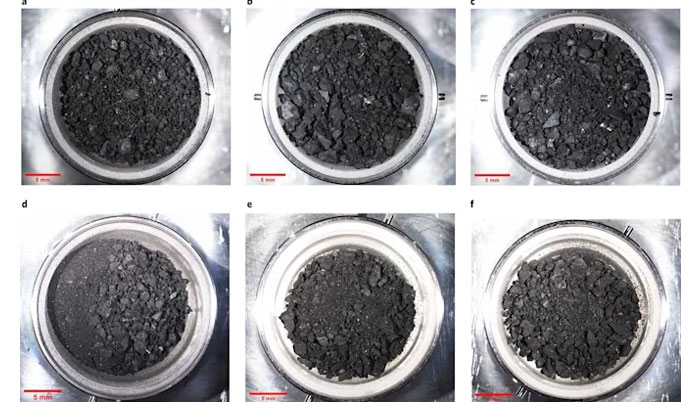![]() Home > Space & Science
Home > Space & Science
First Full Asteroid Return Sample Confirms Early Solar System Origins

Ryugu asteroid samples obtained by the Hayabusa2 probe. Yada et. al./Nature Astronomy
![]() December 22nd, 2021 | 12:46 PM |
December 22nd, 2021 | 12:46 PM | ![]() 1283 views
1283 views
ENGADGET
The rock is made of very primitive materials.
Scientists have finally studied their first full samples returned from an asteroid in space, and they confirm what you'd expect — while providing some new insights. ScienceAlert reports researchers have released two papers revealing their first analysis of samples from Ryugu, the space rock the Hayabusa2 probe visited in February 2019. The team knew Ryugu would be a common, carbon-rich C-type asteroid, but that still makes it a good peek at the ingredients of the early Solar System.
The sampling indicates Ryugu has a carbon-dominated composition similar to the Sun's photosphere (outer shell), much like certain meteorites. It's made of the most primitive materials in the Solar System, emerging from the dust disc that formed along with the Sun itself. It's also quite porous, like many asteroids. However, it's not quite a neat and tidy example. Most C-type asteroids have a low albedo (solar radiation reflectivity) of 0.03 to 0.09 due to their carbon, but Ryugu's is 0.02. It's dark even by the standards of its cosmic neighbors.
As it stands, the very existence of these studies represents an achievement. The first attempt to return a sample, from the astroid Itokawa in 2010, only netted a tiny amount of dust. There's still more to come from Ryugu, but even the existing data could help scientists reshape their understanding of the Solar System's birth and development.
Source:
courtesy of ENGADGET
by Jon Fingas
If you have any stories or news that you would like to share with the global online community, please feel free to share it with us by contacting us directly at [email protected]